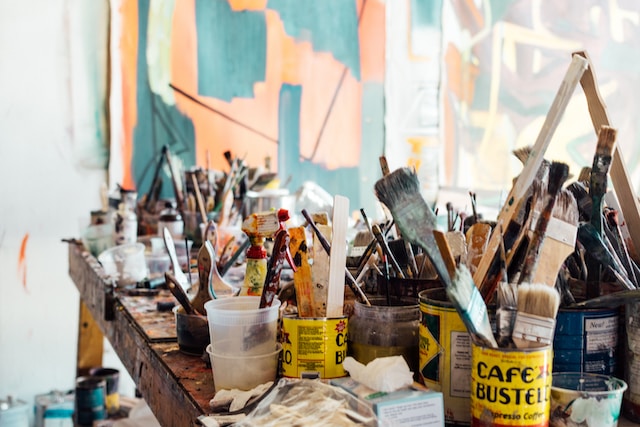In an increasingly digital and visually-oriented world, the sense of touch is often overlooked in the realm of art. However, a growing movement is challenging this paradigm by reviving tactile art forms that engage our sense of touch, offering a unique and enriching artistic experience. In this article, we delve into the resurgence of tactile art and its profound impact on both artists and audiences.
The Digital Age and the Neglected Sense
The proliferation of screens, touchpads, and keyboards has reshaped how we interact with the world, emphasizing visual and auditory experiences. As our lives become more digitized, the sense of touch is often left behind. Tactile art seeks to rectify this imbalance by reintroducing touch as a central element of artistic expression.
Tactile Art Defined:
Tactile art encompasses a diverse range of artistic forms that invite physical interaction. This can include sculptures, installations, textiles, and mixed media pieces that encourage viewers to touch, feel, and explore the artwork using their hands.

Engaging Multiple Senses:
Tactile art engages not only our sense of touch but also our imagination. By interacting physically with the artwork, viewers become active participants in the creative process, forging a deeper connection between themselves and the piece.
Accessibility and Inclusivity:
Tactile art promotes accessibility and inclusivity in the art world. It allows individuals with visual impairments or disabilities to engage with and appreciate art on a level that might not be achievable through visual means alone.
Sculptural Tactility:
Sculpture has long been a primary form of tactile art. Sculptors like Auguste Rodin and Barbara Hepworth have crafted works that beckon viewers to run their hands over the contours and textures, creating a sensory dialogue between the artist and the observer.
Tactile Textiles:
Textiles offer a rich canvas for tactile exploration. Fiber artists weave intricate patterns, textures, and shapes into their creations, inviting viewers to experience art through the sense of touch. Textile art provides warmth, comfort, and a tangible connection to the artist’s craft.

Interactive Installations:
Many contemporary artists are pushing the boundaries of tactile art through interactive installations. These immersive environments encourage participants to touch, move, and even manipulate elements of the artwork, blurring the line between the observer and the creator.
The Healing Power of Touch:
Tactile art can have therapeutic benefits. Touch has been shown to reduce stress, anxiety, and depression. Art therapists incorporate tactile art into their practice, using it as a medium for self-expression and emotional healing.
Challenges and Preservation:
While tactile art offers a unique and enriching experience, it also presents challenges in terms of preservation. Frequent touching can wear down materials, necessitating careful maintenance and consideration of longevity.
Tactile Art in the Digital Age:
Tactile art is not immune to the influence of technology. Artists are incorporating digital elements into their tactile works, creating hybrid experiences that blend the tangible and the virtual.
Conclusion – Reawakening the Sense of Touch in Art
In a world that often prioritizes the visual and the digital, tactile art serves as a powerful reminder of the importance of our sense of touch. It reconnects us with the physical world, encourages a deeper engagement with art, and promotes accessibility for all. As the resurgence of tactile art continues, it challenges the boundaries of what is possible in the realm of creative expression, proving that art can be not only seen and heard but also felt in the most profound and enriching ways.

